Our site is reader supported, this means we may earn a small commission from Amazon and other affiliates when you buy through links on our site.
Alcea, more commonly known as Hollyhocks, are stunning plants with the most amazing, often tall flower spikes. In fact, my hollyhocks grew to over 2 meters tall! Let’s put it another way, nearly as tall as my giant sunflowers and if you have the single varieties of hollyhocks (as I do) you will know that the bees absolutely love them.
I like that they are easy to grow, whether you grow them from seed or just replacing them by buying new plants from your local garden centre or nursery. So, I often get asked what to do with hollyhocks after flowers and there is a couple of things to consider.
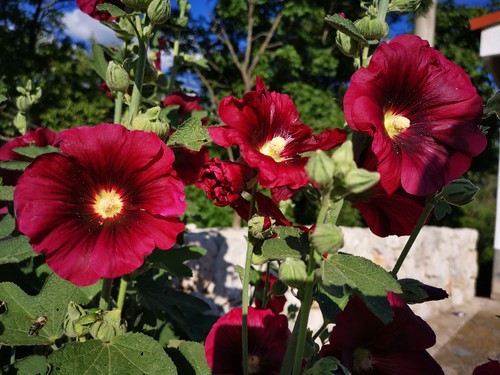
Firstly, you need to decide if you want to collect the seeds, let them self seed or you are just going to buy new plants every year. If you plan to buy new plants every year, you can just cut the flower stems back after flowering. If you want to grow them from seed you either need to let them almost go to seed and then collect the seeds or let them seed freely and then cut the flower stalks back.
Cutting hollyhocks back after flowering to promote a second flush of flowers
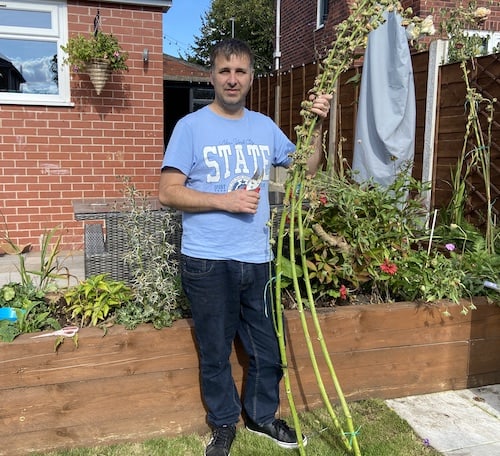
The first thing to note is that if you cut hollyhocks back after flowering but before they go to seed, you will often get a second flush of flowers in the late summer. Now, the flowers will not be as amazing as the first flush (on a tall stem often up to 2 meters tall) but they will give lots of flowers around the main plant that can look stunning and give some colour later in the summer as traditionally they flower from June to September.
Letting hollyhocks go to seed and collecting before they naturally disperse
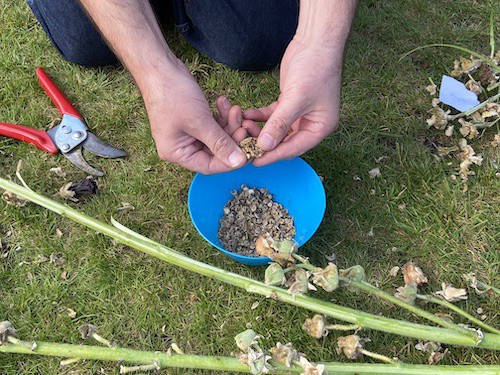
Now, this is what I tend to do as it means I can grow them in seed trays. Once the plants have gone to seed, you can collect the seeds once you can see that the old flowers pods (where the flower originally were on the stem) have turned brown and dried out.
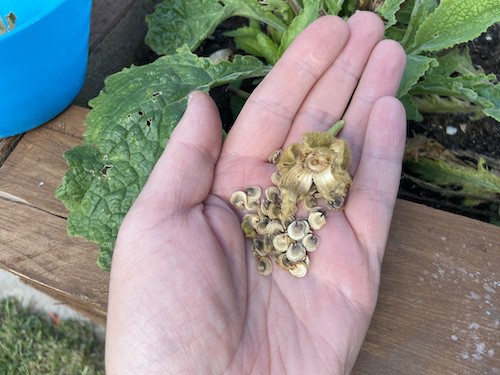
They will fall out of the seed pods when you lightly run your fingers over them. If the seed pod is still green, give them a little longer as they are not quite ready yet.
When to grow hollyhocks from seed
When it comes to sowing seeds you have two options, you can sow seeds in spring and they will be ready to plant out around June, but they won’t flower until the following year.
You can also sow seeds in summer and plant them out in the autumn, again these won’t flower until the following year.
How to sow hollyhock seeds
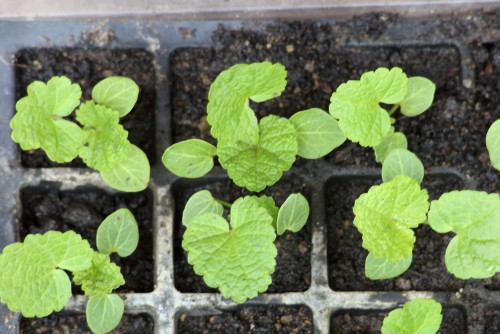
Hollyhocks are easy to grow from seed because they have a good germination rate and are large enough to handle easily. Firstly, I use a heated propagator as they (the seedlings) ideally should be kept at a temperature of around 15-20°C. You can see my recommended propagators here.
Fill a seed tray with seed compost, I like to use seed trays with separate modules/cells as it can make it easier to plant them out later, but you can use a standard seed tray. Water the compost and allow it to drain before sowing the seeds. Keep them spaced out to make pricking them out at a later date an easier process.
Put a thin layer of compost (using a sieve) on top of the seeds. They usually germinate in around 2 weeks but need growing on for a further 5 to 6 weeks until they are big enough to pot on into smaller pots.
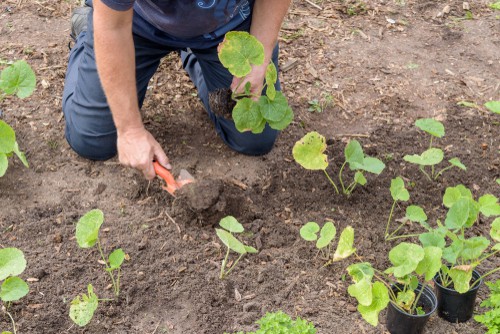
If you sow seeds in spring they will usually be ready to plant out around June or July.
To learn more about growing hollyhocks from seed read my guide here
Letting hollyhocks self-seed
The final thing you can do with hollyhocks is to simply let them go to seed and disperse themselves. Once the seeds have germinated and are nice compact plants, you can then carefully lift them and replant them in their final positions and they will flower the following year. Be careful not to damage the long taproots as they usually won’t grow as well if you break the taproot.
If you have any other issues with diseases such as hollyhock rust, you can read about it here and you can read about other hollyhock diseases and how to treat them in this guide

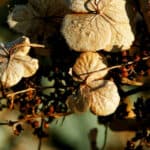
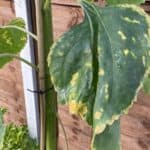
1 Comment
Hello John, I’ve just read your Article on Hollyhocks. Excellent info and so easy to follow. My thanks to you. Ray S NZ